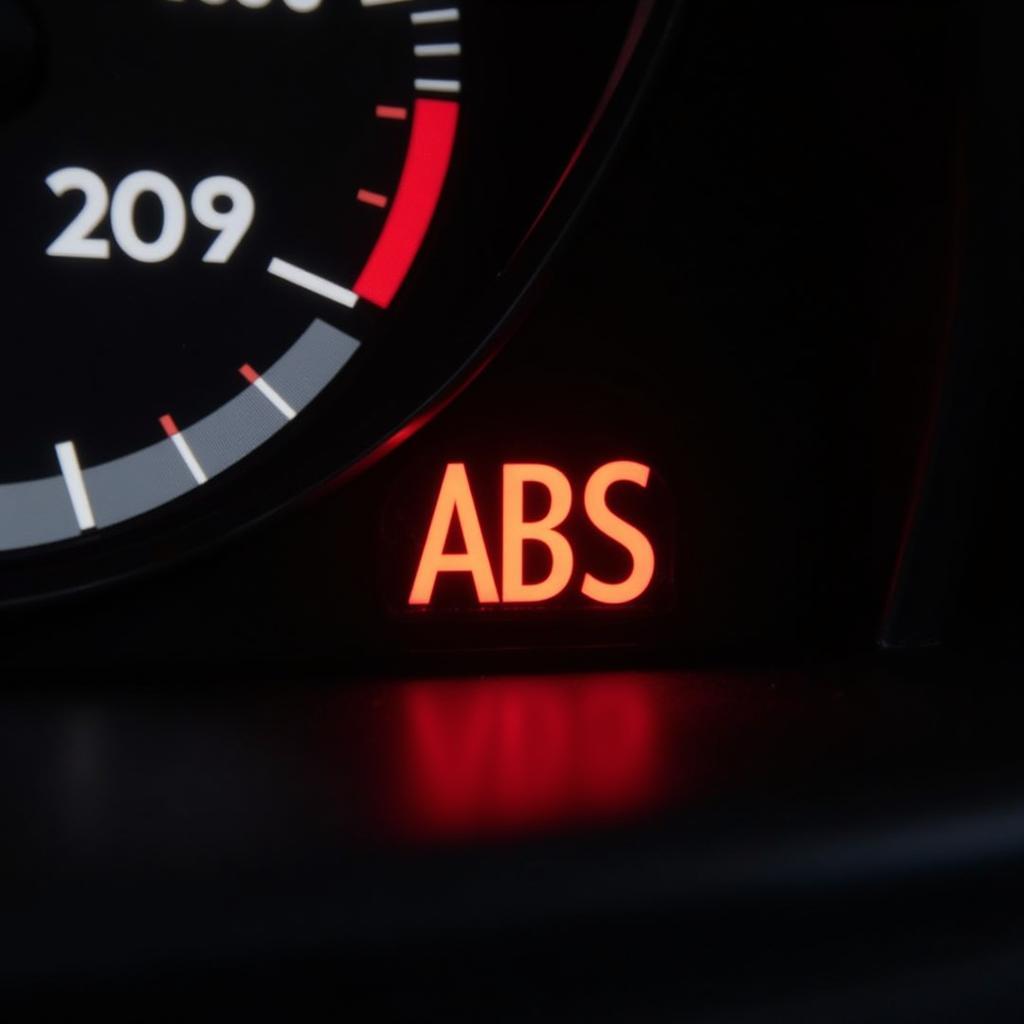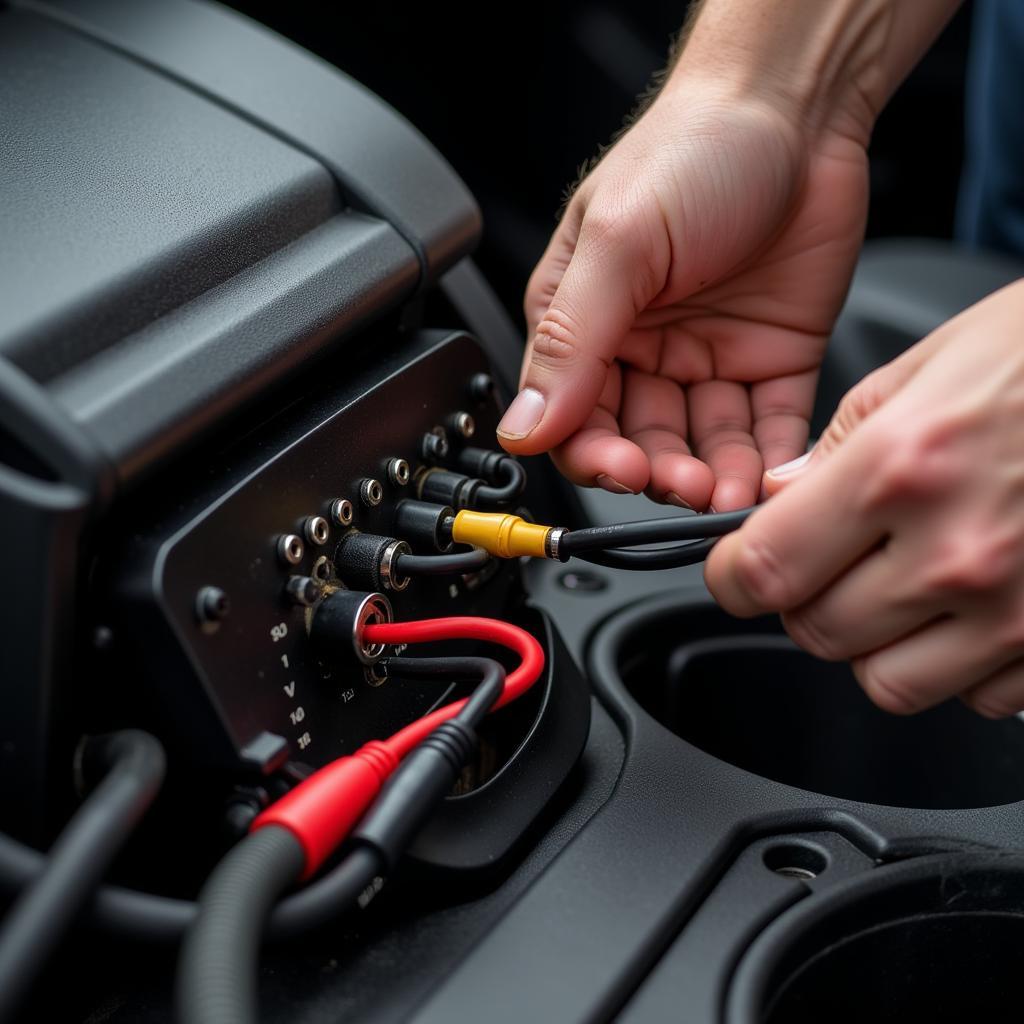That annoying squeal coming from under your hood? It’s likely a squeaky car belt and addressing it quickly can prevent further damage and costly repairs. This comprehensive guide will walk you through the causes, diagnostics, and solutions for How To Fix A Squeaky Car Belt.
Why is My Car Belt Squeaking?
A squeaking car belt can be caused by several factors, from simple wear and tear to more complex mechanical issues. Understanding the root cause is crucial for effective troubleshooting. Common culprits include:
- Belt Misalignment: A belt riding slightly off its pulley can create friction and noise.
- Worn or Damaged Belt: Cracks, glazing, or fraying can reduce grip and cause squeaking.
- Worn or Damaged Pulleys: A seized or worn pulley can cause the belt to slip and squeal.
- Dry or Cold Weather: Rubber belts can become stiff and noisy in cold or dry conditions.
- Contamination: Oil, coolant, or other fluids can degrade the belt material and create noise.
Diagnosing the Squeak
Pinpointing the source of the squeak is the first step to fixing a squeaky car belt. Start by visually inspecting the belt for any visible damage. Look for cracks, fraying, or glazing. Next, check the alignment of the belt on the pulleys. If the belt appears to be riding off-center, it could be the source of the noise.
Is it the Belt or a Pulley?
To determine if the squeak is coming from the belt itself or a pulley, try this simple test: With the engine off, carefully spray a small amount of belt dressing or water onto the belt while rotating the engine by hand. If the squeak disappears momentarily, the belt is likely the culprit. If the squeak persists, a pulley might be the problem.
Fixing a Squeaky Car Belt
The solution to a squeaky car belt depends on the underlying cause. Here are some common fixes:
-
Belt Tightening: If the belt is loose, tightening it might solve the problem. However, be careful not to overtighten, as this can damage the belt and other components.
-
Belt Replacement: A worn or damaged belt needs replacing. Fixing squeaky belts in cars often involves this straightforward procedure. Be sure to use the correct belt type and size for your vehicle.
-
Pulley Replacement: A damaged pulley should be replaced immediately. This often requires specialized tools and knowledge, so it’s best to consult a mechanic if you’re unsure.
-
Belt Dressing Application: While belt dressing can temporarily silence a squeaky belt, it’s not a long-term solution. Fix squeaky serpentine belt car by addressing the underlying cause rather than masking the symptom.
-
Cleaning and Degreasing: Cleaning the belt and pulleys with a degreaser can remove contaminants that contribute to squeaking.
“Regular maintenance is key to preventing car belt issues. Inspecting your belts during routine oil changes can save you headaches down the road,” advises John Smith, ASE Certified Master Technician.
How to Fix a Squeaky Belt on a Car: Preventive Measures
Regular maintenance is the best way to avoid dealing with a squeaky car belt in the first place. Here are some preventative measures:
-
Regular Inspections: Check your belts regularly for signs of wear and tear.
-
Proper Tension: Ensure your belts are properly tensioned.
-
Keep it Clean: Keep the engine compartment clean and free of oil and other fluids.
fixing a squeaky belt on a car requires attention to detail and a systematic approach.
“Addressing a squeaky belt promptly can prevent more serious problems down the line, such as a broken belt, which can lead to engine damage,” says Jane Doe, Automotive Engineer at XYZ Auto.
Conclusion
A squeaky car belt, while seemingly minor, can signal underlying problems. Addressing the issue promptly, whether through tightening, cleaning, or replacing the belt or pulley, can prevent further damage and costly repairs. How to fix a squeaky belt on a car is a relatively straightforward process in many cases, but don’t hesitate to seek professional help if you are unsure.
Connect with AutoTipPro for further assistance. We are located at 500 N St Mary’s St, San Antonio, TX 78205, United States. You can also reach us at +1 (641) 206-8880.







Leave a Reply